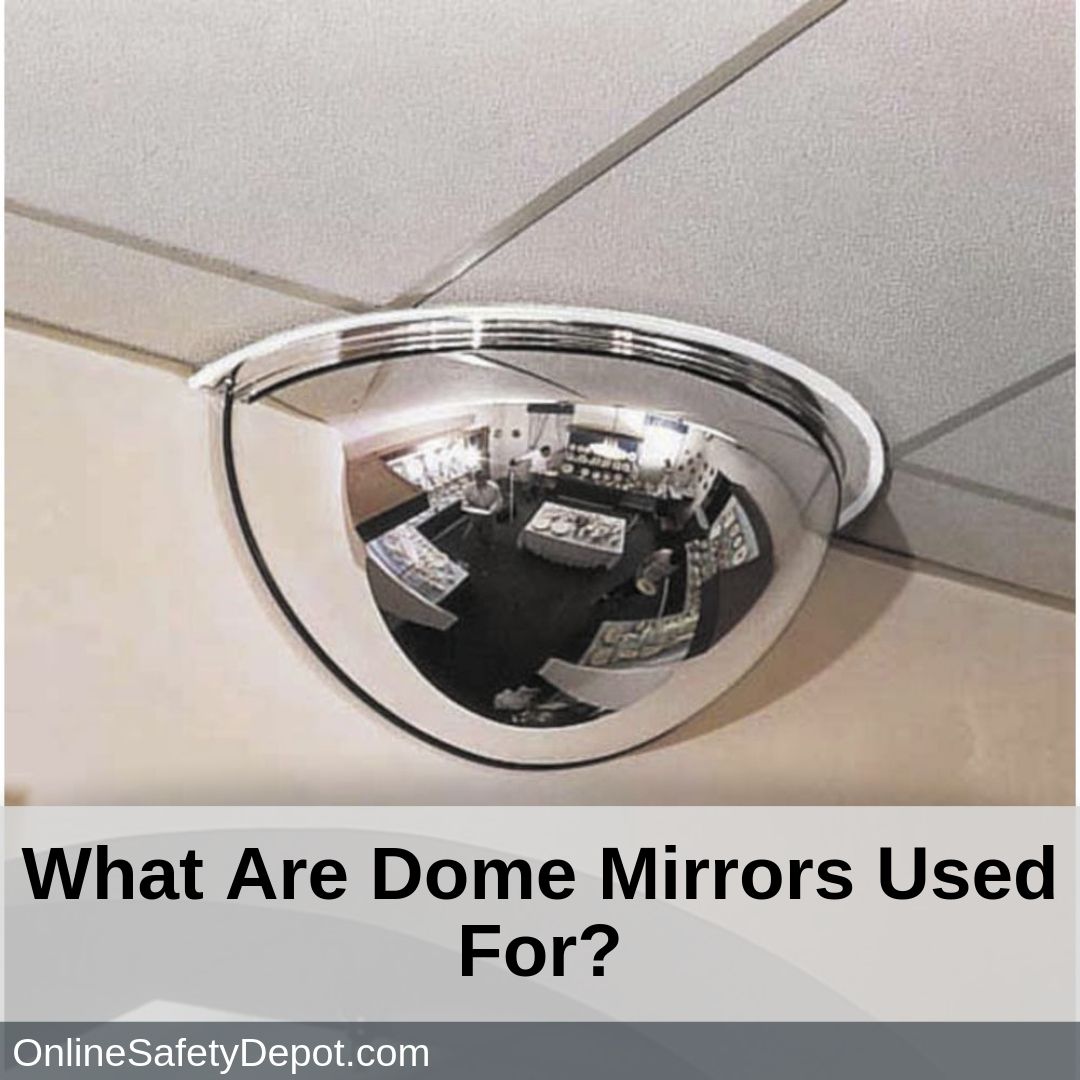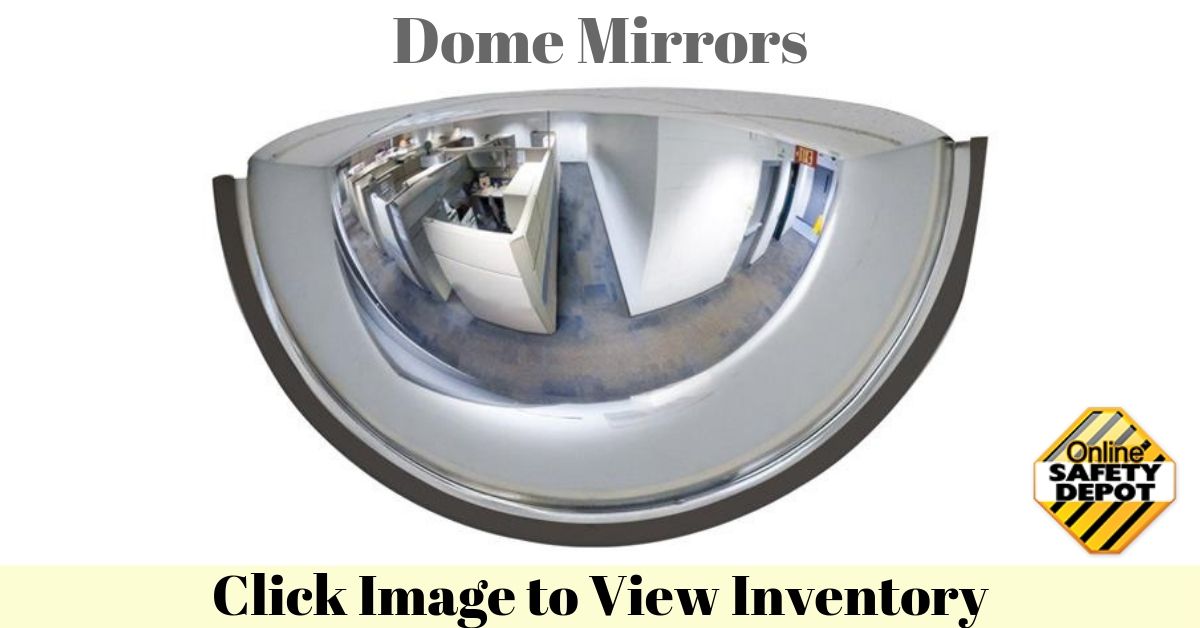What Are Dome Mirrors Used For?
As the name implies a dome mirror is convex in its structure, meaning that it is not flat but rounded outward, and as a mirror reflects images. If it was concave-shaped it would be rounded inward.
So, what viewing benefit does the convex shape provide and what are dome-shaped mirrors used for? Dome mirrors provide added safety, security, and surveillance capabilities by enabling the viewing of areas otherwise not visible with flat surface mirrors. This enhanced viewing is used in the prevention of accidents, theft, surprise attacks, or simply monitoring areas for other purposes.
Because dome mirrors allow viewing of blind spots, around corners, hallway intersections, entrance and exit paths, and even over certain barriers, they are essential elements of safety for individuals, vehicles, and equipment operations. In essence, dome mirrors allow the viewer to see areas normally hidden as well as a larger viewing area by simply looking at the mirror. They are often used in all types of commercial buildings, construction sites, warehouses, hospitals, parking garages, or any facility where being able to see what is coming and what is happening in areas typically hidden from normal view.
What are the different types of dome mirrors and what are their unique uses?
Dome mirrors typically come in three different types, each with different viewing capabilities, and therefore its use is specific to the unique viewing characteristic that is required for the setting used. Knowing this allows you to choose the best type of dome mirror for your needs. The three main types of dome mirrors are:
- Quarter Dome or 90 Degree View Mirror: This type of dome mirror is typically positioned in the corner of a room or the corner of an “L” shaped hallway. This mirror allows you to see what is happening on the other side of a room or area, what traffic may be coming around the corner (blind corner), and what may be approaching you from behind. They also provide a larger wide view than other types of dome mirrors.
2. Half Dome or 180 Degree View Mirror: This type of dome mirror is placed at the end of a hallway or pathway that has a “T’” intersection (3-way intersection) with another hallway or pathway or is placed in the center of a room. Its configuration gives you a good view of what is coming down the hallways to the right and left, or both sides of a room, and also a view of what is happing directly behind you. It can even allow for viewing on the opposite side of a short barrier. This type of mirror is usually installed high up on the wall or from the ceiling of the room or hallway
3. Full Dome or 360 Degree View Mirror: This type of mirror is placed centrally in a room or area, or in corridors that intersect forming a “+” or 4-way intersection. As the name implies, the full-dome mirror allows you a panoramic view of concurrently and is a good choice for surveillance and security of open facilities.
What are other considerations when selecting a dome mirror?
Dome mirrors are typically used in an indoor setting. They are also most effective for use in viewing areas where the objects need to be clearly viewed and are no more than about 20-25 feet away. The curvature of the dome safety mirror lens impacts its height/depth ratio. Therefore, the size and positioning of the mirror will determine its effectiveness. The larger the mirror, the larger the objects will appear and the greater the detail that will be provided, and vice versa. Consequently, if a dome mirror is too small or is positioned too far away so that the ability to clearly observe what is going on, the mirror will not be effective for its intended use. The following factors should be taken into consideration when determining which type of dome mirror is needed for your particular circumstances.
- The distance in feet the person using the mirror will be located from the mirror.
- The distance in feet from the mirror the objects or areas you want to view is located.
- What degree of acuity or detail will you need in viewing the area or objects? For example, will you need to be able to distinguish a particular person from another person? Will you need to be able to identify changes in for example numbers or other images, etc.
In addition, there are options available for the construction of the lens of the safety dome mirror and the mirror backing. Each of these come with some advantages or disadvantages, or simply indicate which setting it would be best suited for use.
Mirror Lens Options
- Stainless Steel: strong material and provides the greatest resistance to corrosion.
- Acrylic: resistant to shatter and is lightweight while providing strength. You can also get a “scratch-resistant” coating.
- Glass: offers the best reflectivity for enhanced detail of images.
- Polycarbonate: offers strong durability and is shatter resistant.
Mirror Backing Options
- Galvanized Steel: strong and weather resistant and applicable for indoor or outdoor application.
- Plastic: lightweight and applicable for indoor or outdoor application.
- Zinc: weather-resistant and mostly chemical resistant and applicable for indoor or outdoor application.
- Hardboard: durable and applicable for indoor use or outdoor when covered.





